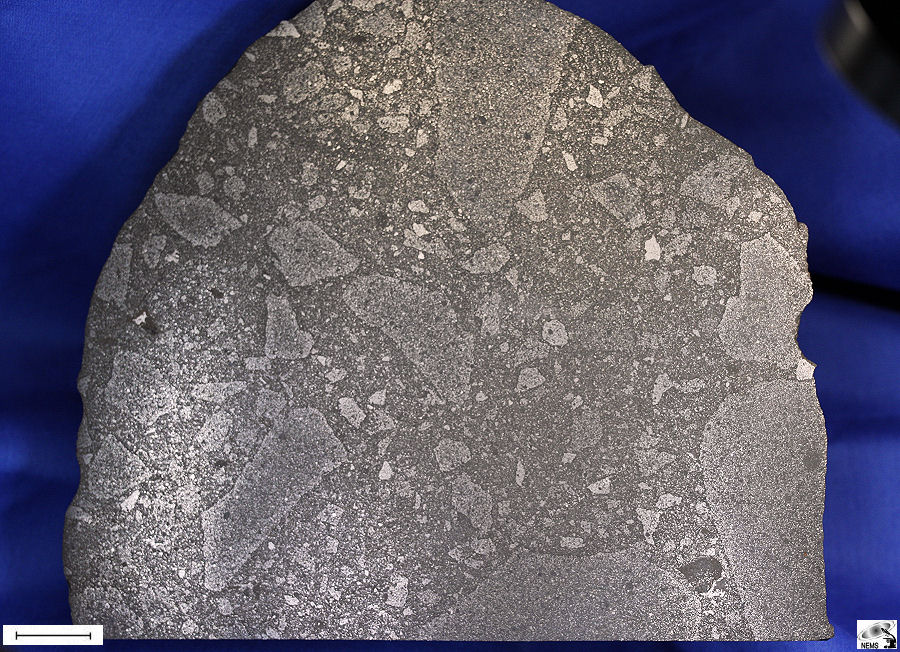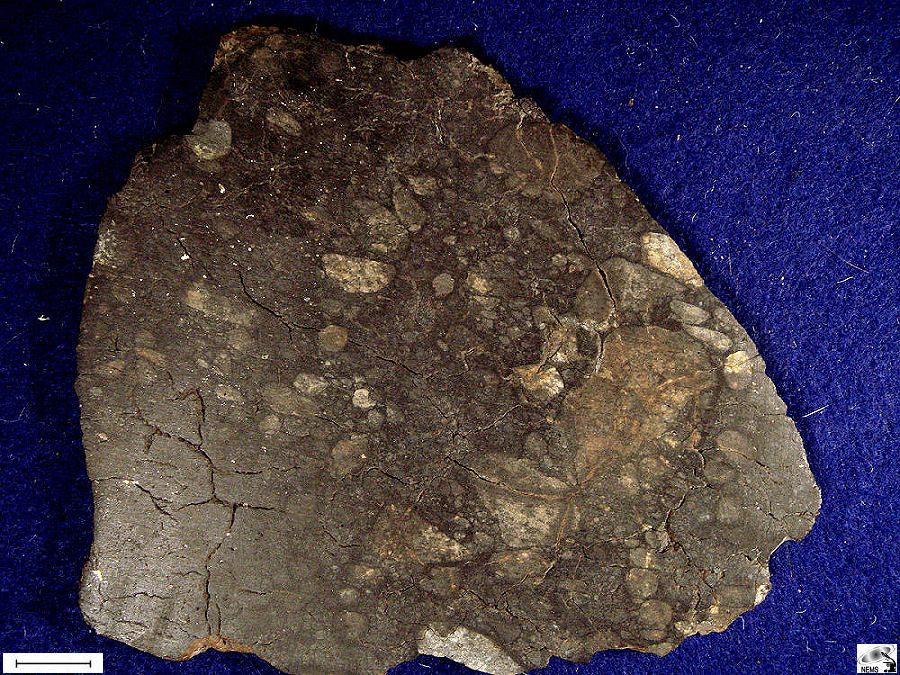|
||
Breccias, Impact and Regolith |
| Listing of Structures |
| Back...Next |
Abee, EH4, Bison, LL6 |

| Figure 1. Scale bar 1 cm. |
Abee, EH4, chondrite, impact-melt breccia. |
When a meteorite collides with the surface of a planetary or asteroidal body, it initiates a series of dynamic processes. The intense heat and pressure generated by this impact shatter and melt some surface material, creating a mix of rock fragments, and molten material. This process consolidates the loose fragments into solid rock, forming a breccia. Impact-melt breccias contain shocked and assorted unmelted rock fragments surrounded by a glassy or fine-grained matrix that solidified from a cooling impact-derived melt. Regolith breccias form much the same way. They are meteorites that also form from the consolidation of loose, fragmented material (regolith) on the surface of a planetary body, such as the Moon, Mars, or an asteroid. A major difference between impact-melt and regolith-brecciated meteorites is that regolith breccias also contain high concentrations of solar-wind-implanted noble gases, whereas impact-melt breccias do not. (1) Regolith breccias typically contain a variety of clasts (rock fragments) of different sizes embedded in a finer-grained matrix. These may include glassy spherules formed by the rapid cooling of molten material ejected during the impact and projectile fragments from the impactor unassociated with the parent body's surface rock. (1) A. Rubin, personal communication, 2024 |

| Figure 2. Scale bar 1 cm. |
Bison, LL6 chondrite, regolith breccia |
| Breccias, Impact and Regolith |
| Listing of Structures |